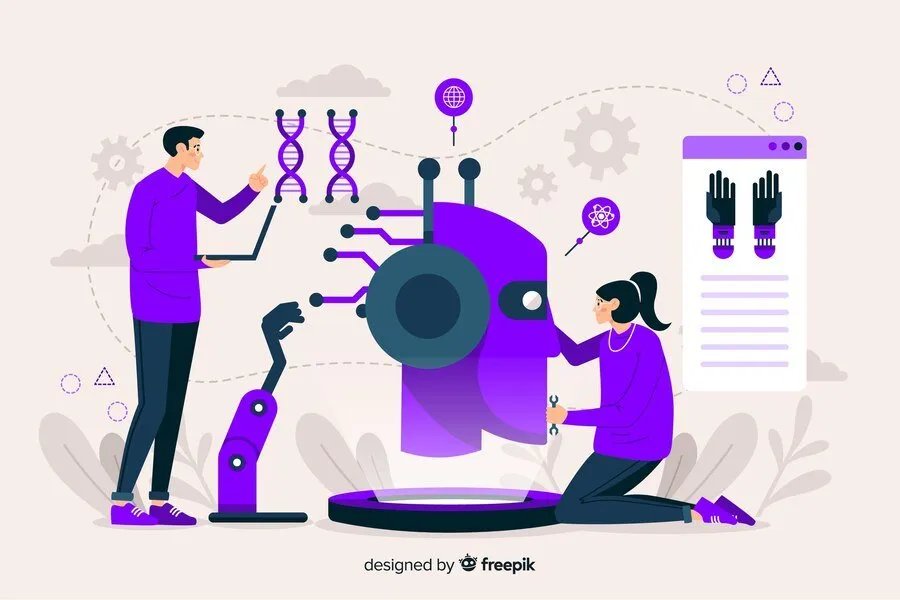As 2025 approaches, hyper automation continues to drive transformational alternatives across industries. Hyper automation, a collection of cutting-edge technologies such as artificial intelligence, machine learning (ML), robotic process automation (RPA) and low-code platforms, aims to automate as many business and IT processes as possible. This trend promises to enable businesses to achieve unprecedented efficiency, improve decision-making and free up employees for high-value tasks. Below, we explore some of the growing hyperautomations that are poised to shape the future of business development.
1. Detection and optimization of processes using artificial intelligence
Enhanced by AI and ML, process discovery tools are becoming increasingly sophisticated, enabling companies to map and optimize workflows with minimal human intervention. AI mining procedures can sense inefficiencies and support optimizations with seamless automation. In 2025, we will rely on these tools to provide deeper insights, explore unstructured records and enable real-time monitoring, significantly reducing operational bottlenecks and increasing overall productivity.
2. Improved cognitive automation
Artificial intelligence applications that look at patterns, understand language, or make decisions are called cognitive automation. In hyper-automated environments, cognitive technologies are increasingly integrated into workflows and can perform complicated tasks.
For example, NLP is suitable for customer service chatbots and intelligent document processing that allows the system to calculate averages using radio frequency identification (RFID) tags. By 2025, hyper-automation solutions will begin to include wider deployment of cognitive artificial intelligence, enabling systems to manage unstructured data and make complex decisions.
3. RPA and AI in autonomous operations
Until now, robotic process automation (RPA) has mostly been applied to mundane, rule-based processes. However, once integrated with AI, it can become more adaptable and intelligent. By 2025, we can have RPA augmented with AI that will adapt, learn and improve over time. Through this shift, organizations can create autonomous workflows that adapt based on real-time data, facilitate intelligent decision-making, and eliminate human intervention in day-to-day operations.
4. Low-code and no-code platforms
At the core of hyper automation are low- and no-code platforms that allow non-technical users to create and implement automation workflows without coding knowledge. Platforms democratize automation by enabling more employees to participate in digital transformation projects.
By 2025, these tools should have more AI and ML capabilities out-of-the-box, making it easier for companies to build scalable solutions for process automation and integration. Improved user-friendly interfaces will give employees more freedom to design, modify and oversee automated processes specific to their requirements.
5. Intelligent Document Processing (IDP)
The growing volume of unstructured data, such as PDF files, emails and scanned documents, presents challenges for organizations. Intelligent Document Processing (IDP) – a brilliant combination of AI, Optical Character Recognition (OCR) and RPA – can extract, analyze and process data. By 2025, IDP will be an invaluable part of hyper-automation initiatives, especially in industries such as finance, healthcare and legal services, each of which are based on document-intensive workflows. IDP will allow for increased document processing automation capabilities, reduced manual effort and increased data accuracy.
6. How we integrate IoT with hyper automation
The Internet of Things is connecting more devices than ever before and generating massive amounts of real-time data. The integration of IoT and hyper-automation can prevent organizations in various industries from making premature decisions, helping them to streamline operations. For example, IoT sensors can monitor the health of manufacturing equipment, and hyperautomated sensors can automatically schedule maintenance when needed. By 2025, IoT and hyper-automation integration will increase, creating new ways to optimize supply chains, improve asset management, and increase predictive maintenance.
7. Hyperpersonalization
By 2025, hyper-automation will lead to hyper-personalization using customer data to create customized experiences. With automated tools, companies in industries such as e-commerce, banking and healthcare will track customer behavior, preferences and interactions in real time.
Through AI-driven insights, companies will be able to offer personalized services and product recommendations at scale. For example, financial institutions providing personal financial advice. In addition, retail businesses can run promotions tailored to individual customers based on past purchases.
8. Process simulation using digital twins
In industries such as manufacturing, digital twins (virtual copies of physical systems) are already widely used. By 2025, digital twins will be increasingly used in the context of hyper-automation to simulate business processes, test innovative automation techniques and predict outcomes.
Before implementing changes in real-world situations, these digital models allow companies to test ideas and changes in a controlled context. Digital twins can be used in a business to replicate the effects of automating the supply chain process and ensure the intended results are achieved without disrupting day-to-day operations.
How to prepare for Hyper Automation in 2025
The timeline for successful implementation of hyper automation trends in 2025 may be as follows:
- Assess processes: Start by looking at processes that can be automated and are repetitive, time-consuming, and error-prone.
- Invest in the right technologies: Choose technologies that fit your business needs, including RPA, AI and low-code platforms.
- Make security a priority: Stack security protocols into your automation strategy to protect your sensitive data and stay compliant.
- Monitor and Improve: This is a continuous journey of hyper automation. Continuously review the performance of automated workflows and make changes as needed.
Conclusion
Hyper automation continues the trend, with intelligent, autonomous and scalable business processes becoming more common. Hyper automation can have a profound effect on productivity across sectors through AI-driven process optimization and industry-specific applications. Hyper automation offers businesses a way to unlock new efficiencies, improve customer experience and continue to thrive. The year 2025 will witness not only a technological shift towards hyper automation, but also a strategic one. This technology can truly change the way organizations operate in the digital world. With the next generation of enterprise innovation bringing more automation, hyper automation is its mainstay.
(photo source)

